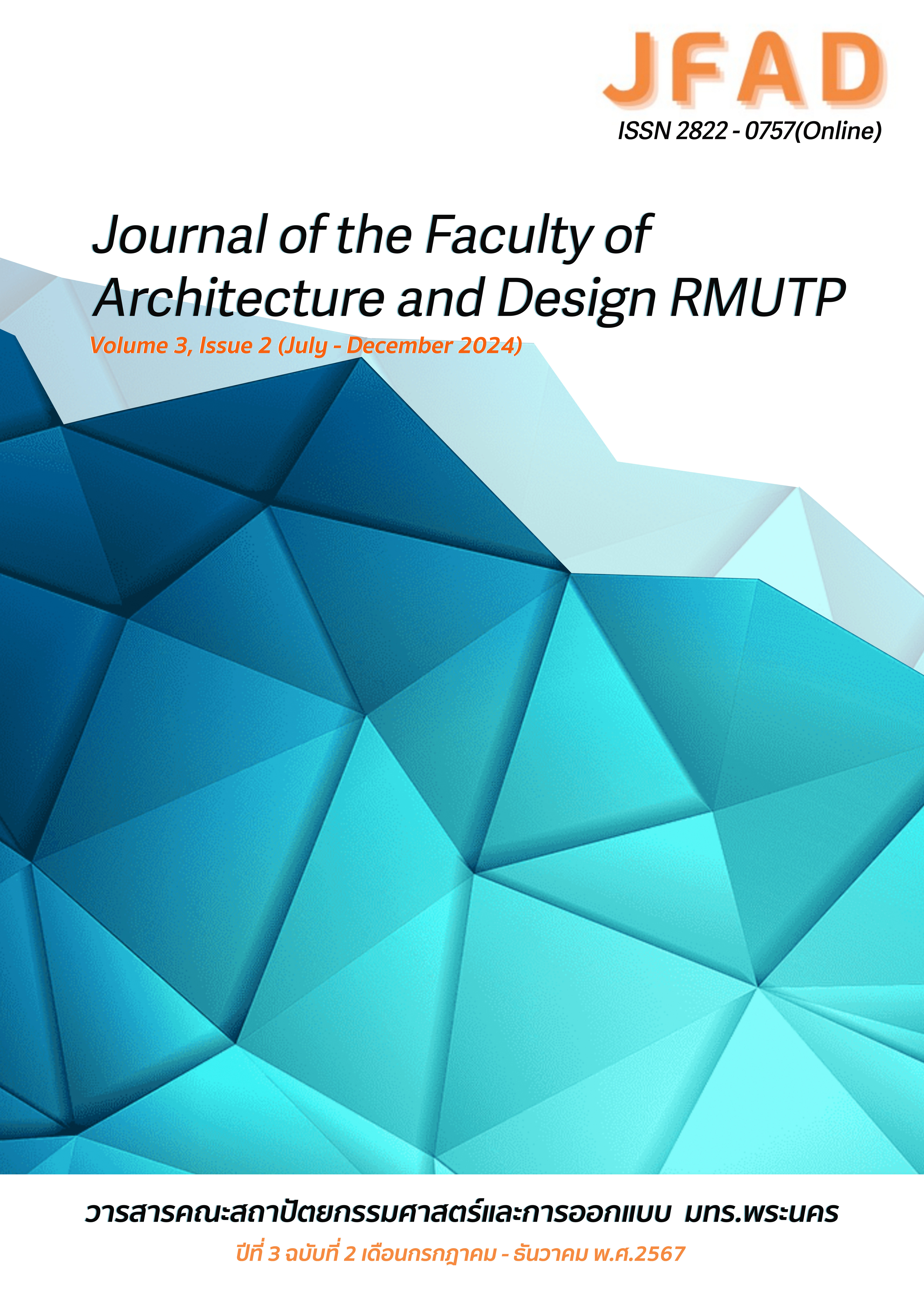Perceptions in Visual Harmony of Housing Estate Between Architects and Teenagers
Main Article Content
Abstract
Too much visual similarity in architecture tends to create a perception of monotony without identity. This research attempts to examine and compare perceptions between architects and general youth. It's about that perception and linking it to design elements. A set of simulations representing relevant variables will be used to find answers between two groups of respondents: architects and young non-architects. Concerning the perception of visual harmony of housing estate. The results of the research indicated that to create a visual style that is in perfect harmony. Architects must pay attention to the consistency of window and door styles. This helps create visual harmony without any boring side effects. Consistency of the texture and color of the walls. will be an important factor that must be considered next.
Article Details

This work is licensed under a Creative Commons Attribution-NonCommercial-NoDerivatives 4.0 International License.
Copyright (c) 2023 : Faculty of Architecture and Design, Rajamangala University of Technology Phra Nakhon
References
Gifford, R. (1997). Environment phychology: Principleles and practice (2nd ed.). Boston: Allyn & Bacon.
Gifford, R., & Cheuk, N.F. (1982). The Relative Contribution of Visual and auditory cues to environmental perception. Journal of Environmental Psycology.
Grote, L., & and Wang, D. (1954). Architectural research methods. New York: Print in the United States of America.
Heimsath, C. (1977). Behavioral Architecture. New York: Mc Graw-Hill.
Horayangul, W. (1992). Environmental and Behavior. Bangkok: Chulalongkorn University.
Lang, J. (1974). Designing for Human Behavior: Architecture and The Behavioral Sciences. Pennsylvania: Lowden, Hutchinson & Ross Inc.
Nunta, J. (2003). Perception Factor of Environment on Urban Landscape: A Case Study on Phrae Municipality. Master’s Degree Thesis. Bangkok: King Mongkut’s Institute of Technology Ladkrabang.
Relph, E. (1976). Place and Placelessness. Pion.
Spreiregen, P.D. (1965). Urban Design: The Architecture of Town and Cities. New York: Mc Graw-Hill.


